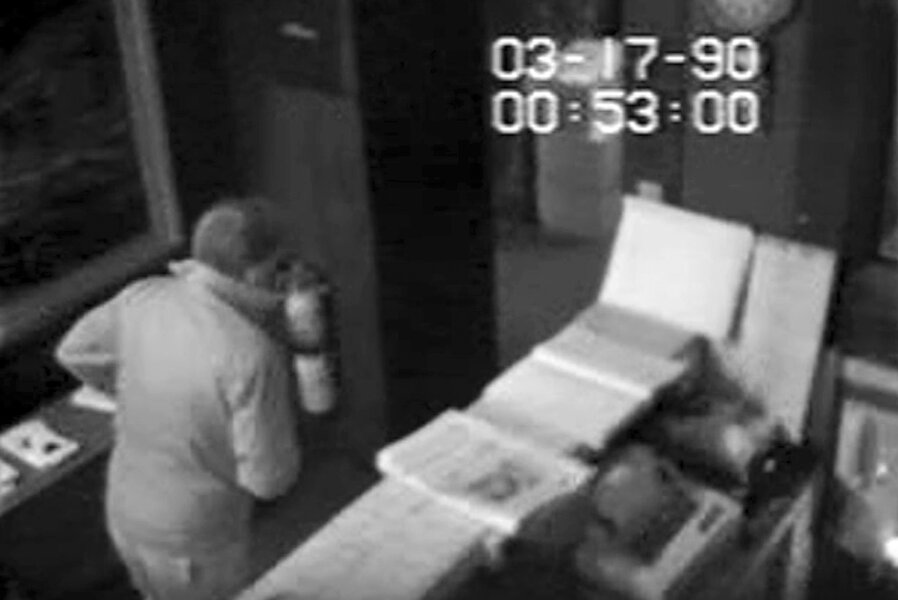Will new video help solve $500 million art heist?
Twenty-five years ago, two men made off with 13 pieces of art from the Isabella Stewart Gardner Museum in Boston. The works stolen were so valuable and recognizable that they could never be sold, leaving experts puzzled. Now, surveillance footage from 24 hours before the theft may help solve the 25-year-old mystery.
The grainy, black-and-white footage, shows a security guard letting in an unidentified, elderly man through the security entrance. The footage from outside the museum shows a car that matches the description of the car used 24 hours later – the night of the theft.
"By releasing this video, we hope to generate meaningful leads and ultimately recover the stolen artwork," said Vincent Lisi, special agent in charge of the Federal Bureau of Investigation in Boston to Reuters.
The Isabella Stewart Gardner Museum theft is somewhat legendary. Two men, dressed as policemen were let into the museum by night watchman Rick Abath in March, 1990. Mr. Abath then summoned the other guard on duty at the request of the phony policemen. The watchmen were found in the basement the next morning duct-taped to pipes, evidently overpowered by the thieves.
The unidentified thieves made off with 13 pieces of artwork, including a Chinese vase and one of only 36 Vermeer paintings in existence, the most valuable piece of art stolen. Five paintings by famed French artist Edgar Degas and three works by Rembrandt were also taken.
If one visits the museum today or takes a virtual tour, the original frames of the paintings hang empty in their rooms as part of a unique stipulation in Isabella Stewart Gardner’s will.
In March 2013, the Federal Bureau of Investigation (FBI) announced that it knew who took the paintings from the Gardner Museum.
"We have identified the thieves who are members of a criminal organization with a base in the mid-Atlantic states and New England," said Richard DesLauriers, special agent in charge of the FBI's Boston office, in a statement.
By the time the FBI believed they had identified the criminals, the statute of limitations for the crime had already expired, which is why they were not exposed. The FBI's suspects may include David Turner and his friend George Reissfelder, according to Ulrich Boser, author of "The Gardner Heist," a book on the theft.
"David Turner is currently in prison for armed robbery; George Reissfelder is dead," said Mr. Boser in an NPR interview. "The paintings have probably moved through a number of hands, if not some hands beyond them."
Although the statute of limitations has passed, the FBI and the museum are still very interested in recovering the stolen art. The museum has a standing offer of $5 million for any information that leads to the recovery of the paintings in good condition.
On the 25th anniversary of the theft, NPR interviewed Boston Globe reporter Stephen Kurkjian who has spent the last two decades investigating and writing about the heist.
When asked if he thought the paintings would be recovered he answered "Yes. I do ... But I sense the way to handle this is: Let another approach be taken. And that approach is to appeal to ... the better angels of people's consciences here in Boston and understand that this is our loss. This is not just the loss of the museum, trustees, or art lovers. These are the basic gems of our commonwealth."







